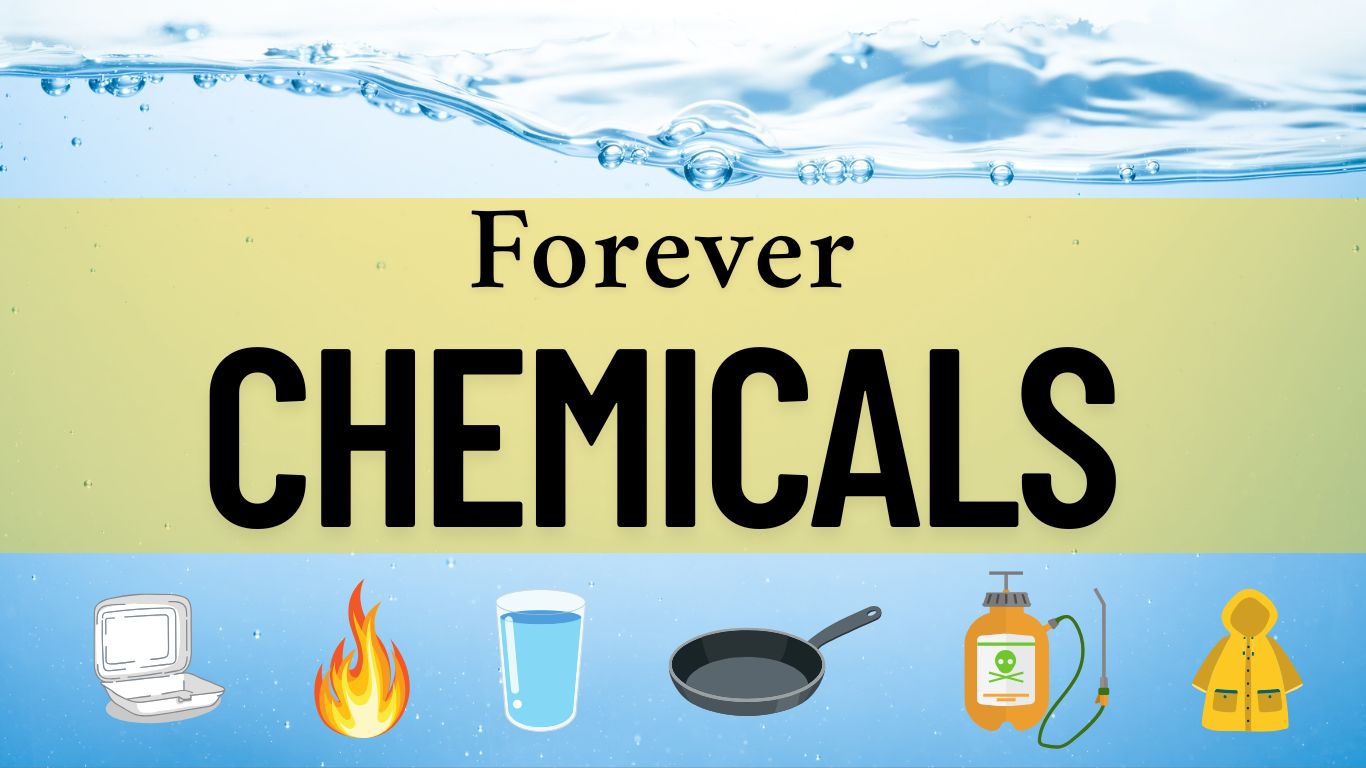
Per- and
polyfluoroalkyl substances—commonly known as PFAS—are a group of human-made chemicals that have been used since the 1940s in a wide range of everyday products. These substances help make items resistant to heat, water, and oil, which is why they’re found in things like non-stick cookware, water-repellent clothing, stain-resistant carpets, food packaging, and certain types of firefighting foam. But while PFAS are useful, their durability comes with a cost: they do not break down easily and can remain in the environment and our bodies for many years.
Watch a video about these contaminants
There are more than 12,000 types of PFAS, including well-known chemicals like PFOA and PFOS, which have been studied the most. These substances can travel through air, water, and soil and may accumulate over time in fish, wildlife, and people. Because of this, scientists are increasingly concerned about the potential health effects. Research has shown that PFAS exposure may lead to higher cholesterol levels, changes in liver function, a weaker immune response (especially in children), and increased risk for certain types of cancer. Pregnant women who are exposed to PFAS may also face greater chances of high blood pressure or related complications.
Here in Maryland, the Department of the Environment is taking strong, science-based steps to protect people and communities from these chemicals. Our
statewide action plan, released in December 2023, lays out how we are monitoring PFAS, reducing exposure, and helping communities respond. One of the state’s first priorities is drinking water. We are conducting widespread testing of public water systems to detect PFAS levels and helping local water providers plan for future cleanup. Maryland is also working closely with national partners to establish safe, enforceable limits for PFAS in drinking water.
But PFAS are not just a concern in drinking water. They can also build up in fish, soil, and even household products. That’s why Maryland is expanding its efforts across multiple fronts. Check out our
Storymap about the history and impact of these contaminants.
Here's what we're doing:
-
Monitoring fish and wildlife: Testing water bodies for PFAS and issuing fish consumption advisories so families can make informed choices about what they eat.
-
Reducing PFAS in everyday products: Firefighting foams that contain PFAS have been banned in Maryland, as have chemicals in food containers, rugs and carpets, and personal care products like makeup and lotion.
-
Protecting the land: Monitoring wastewater and biosolids—materials that are sometimes used as fertilizer—to reduce PFAS from entering the soil and local waterways.
-
Cleaning up contaminated sites: Investigating areas with a history of PFAS use, including industrial locations, airports, and military bases, and working with federal agencies to support environmental cleanup.
Maryland is also committed to fairness and environmental justice. Some communities are more affected by pollution than others, and we are working to ensure that everyone has equal access to clean air, clean water, and a healthy environment—no matter where they live or how much they earn.
For more information, call 410-537-3314. You can also reach us by email at
[email protected].
More information